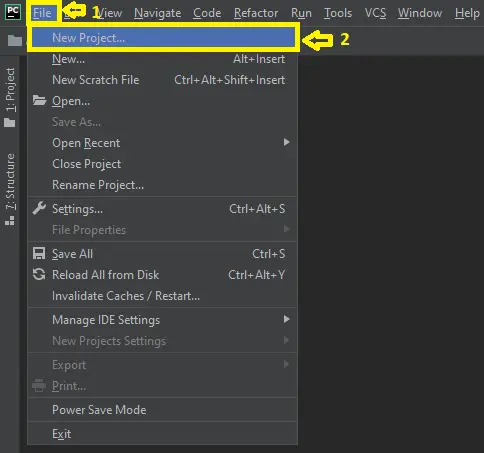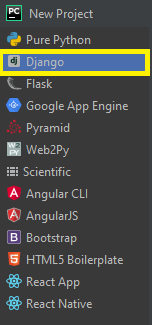A Gym Management System in Django web app, keeps track of all Equipment, Plans, Enquires and members.
It has Admin side which allows extra features like manage member, payments, enquiry, plan, about us, and contact us.
Moving on, We’ve created all of the members, Equipment, Plans, and Enquires crud (create, read, update, and delete) operations.
This is a role-based module in which the admin can perform any operation on the data. The gym management system in Django is created in html, CSS and JavaScript.
Anyway, to start creating a Gym Management System in Django in Python Django, makes sure that you have PyCharm Professional IDE Installed in your computer.
However, This Gym Management System in Python Django Framework and MySQL database, Also includes a Download Source Code for free, just find the downloadable source code below and click download now.
Project Information and Recommended Tools
| About Project | Project Details |
|---|---|
| Project Name | Gym Management System Project in Django |
| Python version (Recommended) | 3.8 Version |
| Programming Language Used | Python Django Language |
| IDE Tool (Recommended) | Sublime, Visual Studio, PyCharm |
| Database | SQLite |
Admin Gym Management System using Django
- Login – By default the admin need to login first to enable to access the system.
- Manage Enquiry– For the enquiry, the admin can add, edit, delete enquiry information.
- Plan Management – For the plan, the admin can add, edit, delete plan information.
- Manage equipment– For the equipment, the admin can add, edit, delete equipment information.
- Member Management – For the member, the admin can add, edit, and delete gym member information.
Gym Management System using Django Steps on How to Create a Project
Time needed: 5 minutes
Here are the steps on how to create a Gym Management System using Django
- Step 1: Open file.
First , open “pycharm professional” after that click “file” and click “new project”.

- Step 2: Choose Django.
Next, after click “new project“, choose “Django” and click.

- Step 3: Select file location.
Then, select a file location wherever you want.

- Step 4: Create application name.
After that, name your application.

- Step 5: Click create.
Lastly, finish creating project by clicking “create” button.

- Step 6: Start Coding.
Finally, we will now start adding functionality to our Django Framework by adding some functional codes.
Downloadable Source Code Below.
Anyway, if you want to level up your programming knowledge, especially python, try this new article I’ve made for you Best Python Projects with source code for Beginners.
But If you’re going to focus on web development using Django, you can download here from our list of Best Django Projects with source code based on real-world projects.
How To Run The Gym Management System using Django?
- Step 1: Extract/unzip the file
- Step 2: Go inside the project folder, open cmd and type the following commands to install Django Framework and run the webserver:
- pip install -r requirements.txt
- python manage.py runserver
- Step 3: Finally, open the browser and go to http://127.0.0.1:8000/
Summary
In summary, this Gym Management System using Django with Source Code can be useful to students or professional who wants to learn python programming language.
This project can also be modified to fit your personal requirements. Hope this project will help you to improve your skills. Happy Coding!
Also, read and visit the other interesting language used in Gym Management System.
- Gym Management System Project In PHP With Source Code
- Gym Management System Project In Python With Source Code
- [Complete] Gym Management System in Laravel with Source Code
- Gym Management System In C With Source Code
- Gym Management System Project In Java With Source Code
Inquiries
If you have any questions or suggestions about Gym Management System Project in Django with Source Code, please feel free to leave a comment below.






Having some errors when trying to run server
File “C:\Users\ekotk\Downloads\Gym_Management_System_Django-1\Gym_Management_System_Django\venv\lib\site-packages\django\db\utils.py”, line 91, in __exit__
raise dj_exc_value.with_traceback(traceback) from exc_value
File “C:\Users\ekotk\Downloads\Gym_Management_System_Django-1\Gym_Management_System_Django\venv\lib\site-packages\django\db\backends\base\base.py”, line 282, in ens
ure_connection
self.connect()
File “C:\Users\ekotk\Downloads\Gym_Management_System_Django-1\Gym_Management_System_Django\venv\lib\site-packages\django\utils\asyncio.py”, line 26, in inner
return func(*args, **kwargs)
File “C:\Users\ekotk\Downloads\Gym_Management_System_Django-1\Gym_Management_System_Django\venv\lib\site-packages\django\db\backends\base\base.py”, line 263, in con
nect
self.connection = self.get_new_connection(conn_params)
File “C:\Users\ekotk\Downloads\Gym_Management_System_Django-1\Gym_Management_System_Django\venv\lib\site-packages\django\utils\asyncio.py”, line 26, in inner
t_new_connection
connection = Database.connect(**conn_params)
File “C:\Users\ekotk\Downloads\Gym_Management_System_Django-1\Gym_Management_System_Django\venv\lib\site-packages\MySQLdb\__init__.py”, line 123, in Connect
return Connection(*args, **kwargs)
File “C:\Users\ekotk\Downloads\Gym_Management_System_Django-1\Gym_Management_System_Django\venv\lib\site-packages\MySQLdb\connections.py”, line 185, in __init__
super().__init__(*args, **kwargs2)
django.db.utils.OperationalError: (1045, “Access denied for user ‘root’@’localhost’ (using password: NO)”)
you have no database. you need to create a database first and start your xampp
Password for admin is no where to be seen